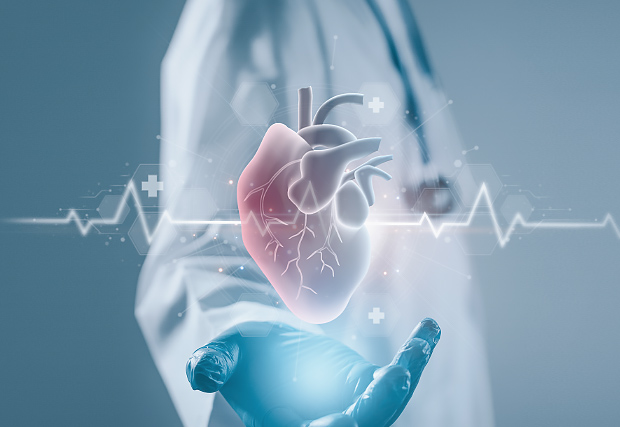Diagnostic Tool and Life-Saving Tool
Cardiac catheterization is a common procedure used to diagnose and treat heart conditions. A long thin tube is inserted and threaded into an artery and threaded through blood vessels to the heart. Cardiac catheterization is used to diagnose and determine heart disease, and also to carry out heart treatment procedures that involve biopsies, shunts and stents. Some of the procedures are listed below.
Watch the video to learn how cardiac catheterization is used to diagnose and treat heart conditions.
Intravascular Ultrasound
Intravascular ultrasound (IVUS) is a medical imaging method that combines cardiac catheterization and echocardiography to allow doctors to see coronary arteries from the inside-out in real time. IVUS uses the same technology as the ultrasound imaging used in treadmill stress testing, and many other medical procedures. High-frequency sound waves produce detailed images of the interior walls of arteries making it possible to evaluate the amount of disease present, and the best course of treatment.
Pulmonary Angiography
An angiogram is performed to check for blood clots, aneurysms, congenital heart problems, the narrowing of coronary arteries or to check blood flow before or after surgery. A special dye that shows up on X-rays is injected into blood vessels through the arm or groin, and fluoroscopy is used to obtain an image of pulmonary arteries.
Thrombolytic Therapy
Drugs called lytics, or “clotbusters," are administered to dissolve blood clots that have acutely blocked major arteries or veins posing life-threatening problems. In order to be effective, thrombolytic therapy needs to be initiated as soon as possible, before permanent heart damage has occurred.
Coronary and Peripheral Stenting
Coronary stenting, performed during an angioplasty, is a procedure where an expandable stainless-steel stent is inserted to help restore blood flow in blocked coronary arteries. When arteries get clogged with a build-up, stents widen blood vessels and improve blood flow. A balloon on the tip of the catheter is inserted into the blocked coronary artery and inflated allowing the stent to lock and expand into place. The deflated balloon is removed and the stent is left in place, keeping the artery open. Peripheral angioplasty follows the same procedure and is used to treat peripheral arterial disease (PAD).
Myocardial Biopsy
If heart problems are suspected, a doctor may carry out a myocardial biopsy to remove a small piece of heart tissue for examination. A special catheter with jaws removes a small amount of tissue to send to a lab for testing.
Temporary and Permanent Pacemakers
A pacemaker is a small device that's placed in the chest or abdomen to help control abnormal heart rhythms. This device uses low-energy electrical pulses to prompt the heart to beat at a normal rate. Pacemakers are used to treat arrhythmias. During an arrhythmia, the heart can beat too fast, too slow, or with an irregular rhythm. A pacemaker also can help a person who has abnormal heart rhythms resume a more active lifestyle.
Learn how a pacemaker is used to prompt a heart into beating at a normal pace.

